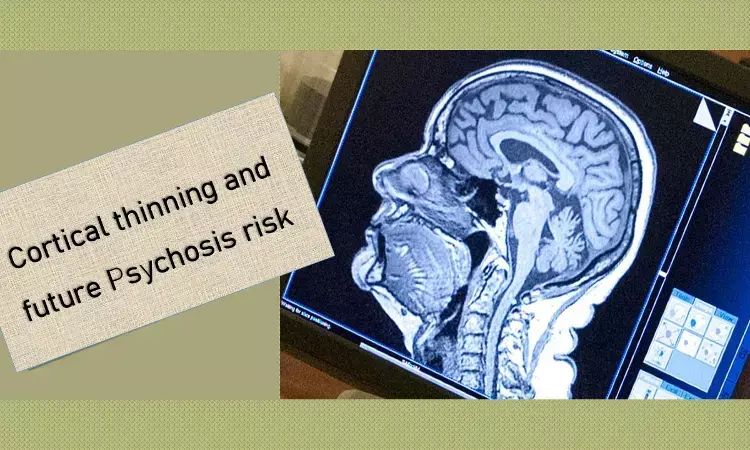- Home
- Medical news & Guidelines
- Anesthesiology
- Cardiology and CTVS
- Critical Care
- Dentistry
- Dermatology
- Diabetes and Endocrinology
- ENT
- Gastroenterology
- Medicine
- Nephrology
- Neurology
- Obstretics-Gynaecology
- Oncology
- Ophthalmology
- Orthopaedics
- Pediatrics-Neonatology
- Psychiatry
- Pulmonology
- Radiology
- Surgery
- Urology
- Laboratory Medicine
- Diet
- Nursing
- Paramedical
- Physiotherapy
- Health news
- Fact Check
- Bone Health Fact Check
- Brain Health Fact Check
- Cancer Related Fact Check
- Child Care Fact Check
- Dental and oral health fact check
- Diabetes and metabolic health fact check
- Diet and Nutrition Fact Check
- Eye and ENT Care Fact Check
- Fitness fact check
- Gut health fact check
- Heart health fact check
- Kidney health fact check
- Medical education fact check
- Men's health fact check
- Respiratory fact check
- Skin and hair care fact check
- Vaccine and Immunization fact check
- Women's health fact check
- AYUSH
- State News
- Andaman and Nicobar Islands
- Andhra Pradesh
- Arunachal Pradesh
- Assam
- Bihar
- Chandigarh
- Chattisgarh
- Dadra and Nagar Haveli
- Daman and Diu
- Delhi
- Goa
- Gujarat
- Haryana
- Himachal Pradesh
- Jammu & Kashmir
- Jharkhand
- Karnataka
- Kerala
- Ladakh
- Lakshadweep
- Madhya Pradesh
- Maharashtra
- Manipur
- Meghalaya
- Mizoram
- Nagaland
- Odisha
- Puducherry
- Punjab
- Rajasthan
- Sikkim
- Tamil Nadu
- Telangana
- Tripura
- Uttar Pradesh
- Uttrakhand
- West Bengal
- Medical Education
- Industry
Risk of future psychosis linked to cortical thinning on MRI, JAMA study.

The clinical high-risk (CHR) paradigm is a widely used framework to investigate mechanisms underlying psychosis vulnerability. ENIGMA Clinical High Risk for Psychosis Working Group in an analysis published in JAMA psychiatry this week have found that CHR status and later transition to psychosis was robustly associated with lower cortical thickness. This study provides evidence for widespread subtle, lower CT (cortical thickness) measures in individuals at CHR.
Help-seeking individuals who do not meet diagnostic criteria for a psychotic disorder but typically present with subthreshold psychotic symptoms and accumulating risk factors are considered at CHR for developing psychosis. An estimated 18% to 20% of individuals at CHR develop a psychotic disorder within 2 years of identification. However, despite decades of research, the nature of morphometrical differences associated with psychosis conversion remains largely unknown.
A large body of work has used structural magnetic resonance imaging (sMRI) to investigate morphometric brain differences in individuals at CHR. Understanding whether morphometric differences in individuals at CHR overlap with those observed in individuals who have schizophrenia and individuals with a genetic subtype of psychosis will provide insights into convergent or distinct differences across the psychosis spectrum.
Against this background, the ENIGMA clinical high risk (CHR) for psychosis initiative, the largest pooled neuroimaging sample of individuals at CHR to date, aimed to discover robust neurobiological markers of psychosis risk. Their objective was to investigate baseline structural neuroimaging differences between individuals at CHR and healthy controls as well as between participants at CHR who later developed a psychotic disorder (CHR-PS+) and those who did not (CHR-PS−).
In this case-control study, baseline T1-weighted magnetic resonance imaging (MRI) data were pooled from 31 international sites participating in the ENIGMA Clinical High Risk for Psychosis Working Group. CHR status was assessed using the Comprehensive Assessment of At-Risk Mental States or Structured Interview for Prodromal Syndromes.
Measures of regional cortical thickness (CT), surface area, and subcortical volumes were extracted from T1-weighted MRI scans. Independent variables were group (CHR group vs control group) and conversion status (CHR-PS+ group vs CHR-PS− group vs control group).
The results were as follows:
1. Lower cortical thickness, but not cortical surface area or subcortical volume, was more pronounced in individuals at CHR in a manner highly consistent with thinner cortex in individuals with established psychosis.
2. Regions that displayed lower cortical thickness in individuals at CHR who later developed a psychotic disorder additionally displayed abnormal associations with age.
3. Compared with those in the CHR-PS− and control groups, at baseline, those in the CHR-PS+ group exhibited thinner cortex in bilateral paracentral, right fusiform, and left superior temporal regions.
4. Authors also found that lower CT in paracentral, superior temporal, and fusiform regions was associated with psychosis conversion; individuals in the CHR-PS+ group exhibited significantly lower CT than those in the CHR-PS− group and control group in these regions.
In this study, CHR status and later transition to psychosis was robustly associated with lower cortical thickness; abnormal age associations and specificity to cortical thickness may point to aberrant postnatal brain development in individuals at CHR, including pruning and myelination.
"In the largest study of brain abnormalities in individuals at CHR to date, we found robust evidence of a subtle, widespread pattern of CT differences, consistent with observations in psychosis. The specificity of these differences to CT—as well as age-associated deviations in regions sensitive to psychosis conversion—may point to abnormal development processes. These findings also point to age ranges (i.e., early adolescence) when morphometric abnormalities in individuals at CHR might be greatest", concluded the authors.
SOURCE: JAMA PSYCHIATRY doi:10.1001/jamapsychiatry.2021.0638
M.B.B.S, M.D. Psychiatry
M.B.B.S, M.D. Psychiatry (Teerthanker Mahavir University, U.P.) Currently working as Senior Resident in Department of Psychiatry, Institute of Human Behaviour and Allied Sciences (IHBAS) Dilshad Garden, New Delhi. Actively involved in various research activities of the department.
Dr Kamal Kant Kohli-MBBS, DTCD- a chest specialist with more than 30 years of practice and a flair for writing clinical articles, Dr Kamal Kant Kohli joined Medical Dialogues as a Chief Editor of Medical News. Besides writing articles, as an editor, he proofreads and verifies all the medical content published on Medical Dialogues including those coming from journals, studies,medical conferences,guidelines etc. Email: drkohli@medicaldialogues.in. Contact no. 011-43720751


